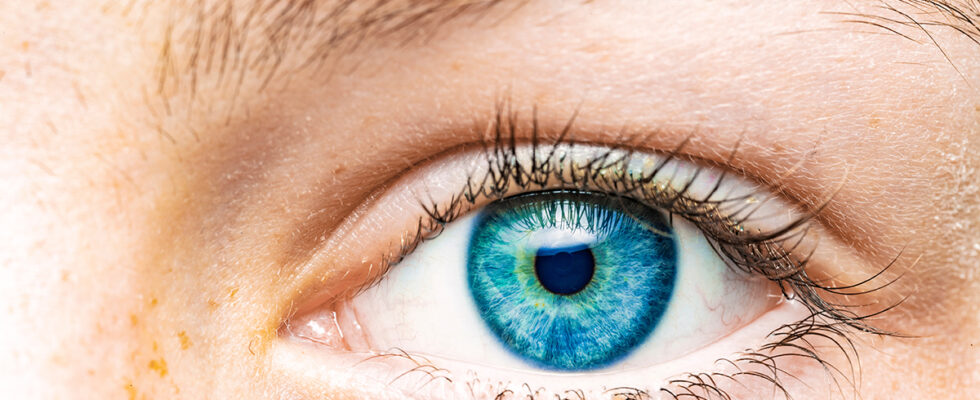A team of scientists is looking to create eye implants with integrated solar panels. They could restore sight to people with degenerative eye diseases, without needing to remove them to recharge them when necessary.

We are not yet in contact with cyborgs on a daily basis, but meeting people with a sophisticated implant in the body is a reality that is already quite a few years old. As this technology progresses, we are seeing the emergence of wireless chargers grafted under the skin, a subcutaneous chip to pay for and open your car, or Elon Musk’s famous Neuralink brain implant, which could cure certain diseases. In medicine, we are developing more and more neuroprostheses. They interact with the nervous system so that the patient regains a lost faculty. The view is one of them.
There retinitis pigmentosa or the Macular degeneration (AMD) are two examples of degenerative eye diseases. They affect the photoreceptorsthese cells of the retina which capture light, and can ultimately make blind. As recalled by Doctor Udo Roemer, engineer specializing in photovoltaic : “It has long been thought that biomedical implants in the retina could replace damaged photoreceptors. […] Trials have already taken place with this technology. But the problem is that it requires wires to be inserted into the eye, which is a complicated procedure“. The solution ? Go wireless by implanting solar panels in the eyes.
Researchers want to create an eye implant incorporating solar panels
The general idea is this: connect a tiny solar panel to the eyeball so that it converts the light received into an electrical impulse. The brain is then responsible for interpreting it to create the visual field. The concept is not new, but it is generally based on silicon devices. Udo Roemer uses other semiconductor materials such asgallium arsenide and the gallium indium phosphide. Why them? Because’it is easier to adjust their propertiesand also becausethey are more efficient than silicon as part of a solar panel.
Read also – AI: 2 mute women find their voices by connecting their brains to a computer
Creating this solar eye implant is complex. “If you think of photoreceptors as pixels, then we need three solar cells to create enough current to send to the brain. So we are studying how to stack them on top of each other to achieve this.“, summarizes the engineer. Currently, the teams have “managed to superimpose two solar cells in the laboratory over a large area – around 1 cm², which gave good results“. Encouraging, but still far from the final product.
A promising technology that is not without compromise
Researchers are now focusing on transformation of solar panels into pixels necessary for sight. It will also be necessary engrave grooves to separate them, which is no small feat. Doctor Udo Roemer still has a good idea of what the finished product will look like. Its surface area will be approximately 2 mm²the pixels measuring 50 micrometerseither 0.05 millimeters. Despite its advantages, notably those of being self-powered and wireless, the imagined implant will perhaps not make it possible to completely dispense with other complementary devices. However, these should not be bulky or unsightly.
“One thing to note is that even with the efficiency of stacked solar cells, sunlight alone might not be powerful enough to work with these solar cells implanted in the retina. You may need to wear some type of protective eyewear or smart glasses that work in tandem with the solar cells and can amplify the solar signal to the intensity needed to reliably stimulate the eye’s neurons.“, warns the scientist.
He also recalls that, like all research of this type, numerous tests will have to be carried out in the laboratory, before going through experiments on animals and then on humans. The first results, however, show that the teams are on the right track to create what will undoubtedly be a revolution in the world of ocular neuroprosthetics. We can also imagine that the technology could eventually be used in other types of implants.
Source: UNSW
